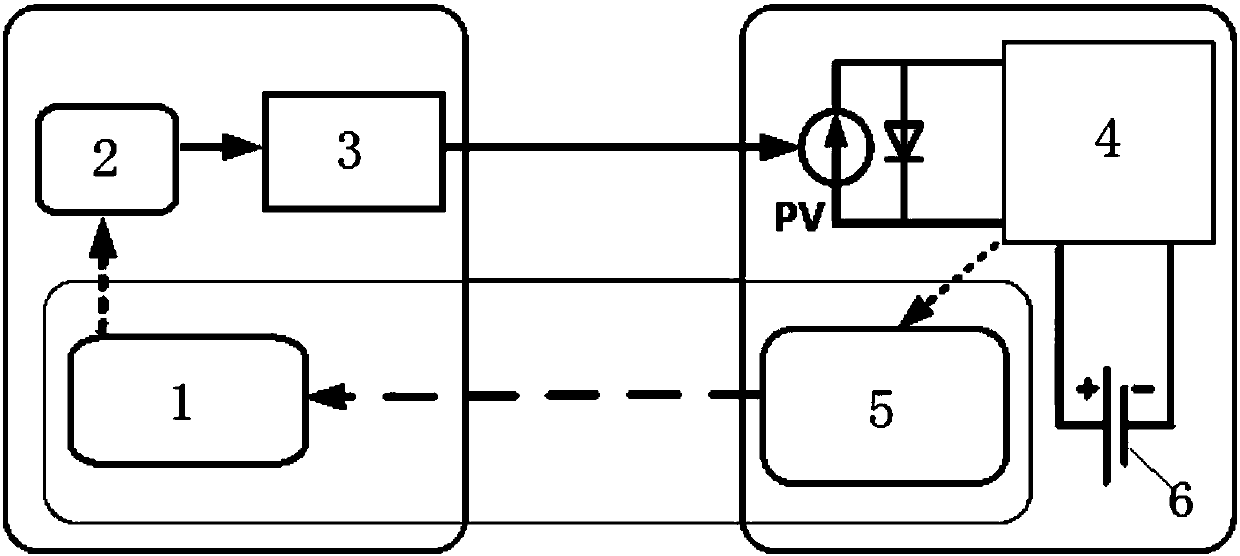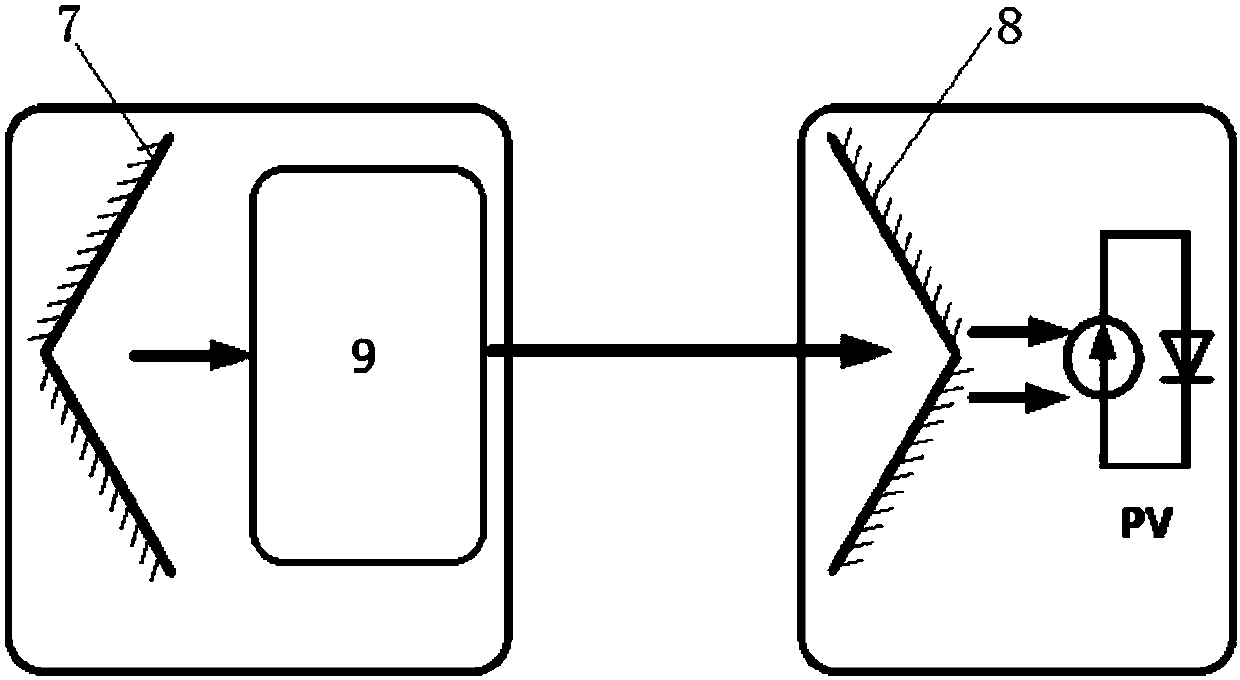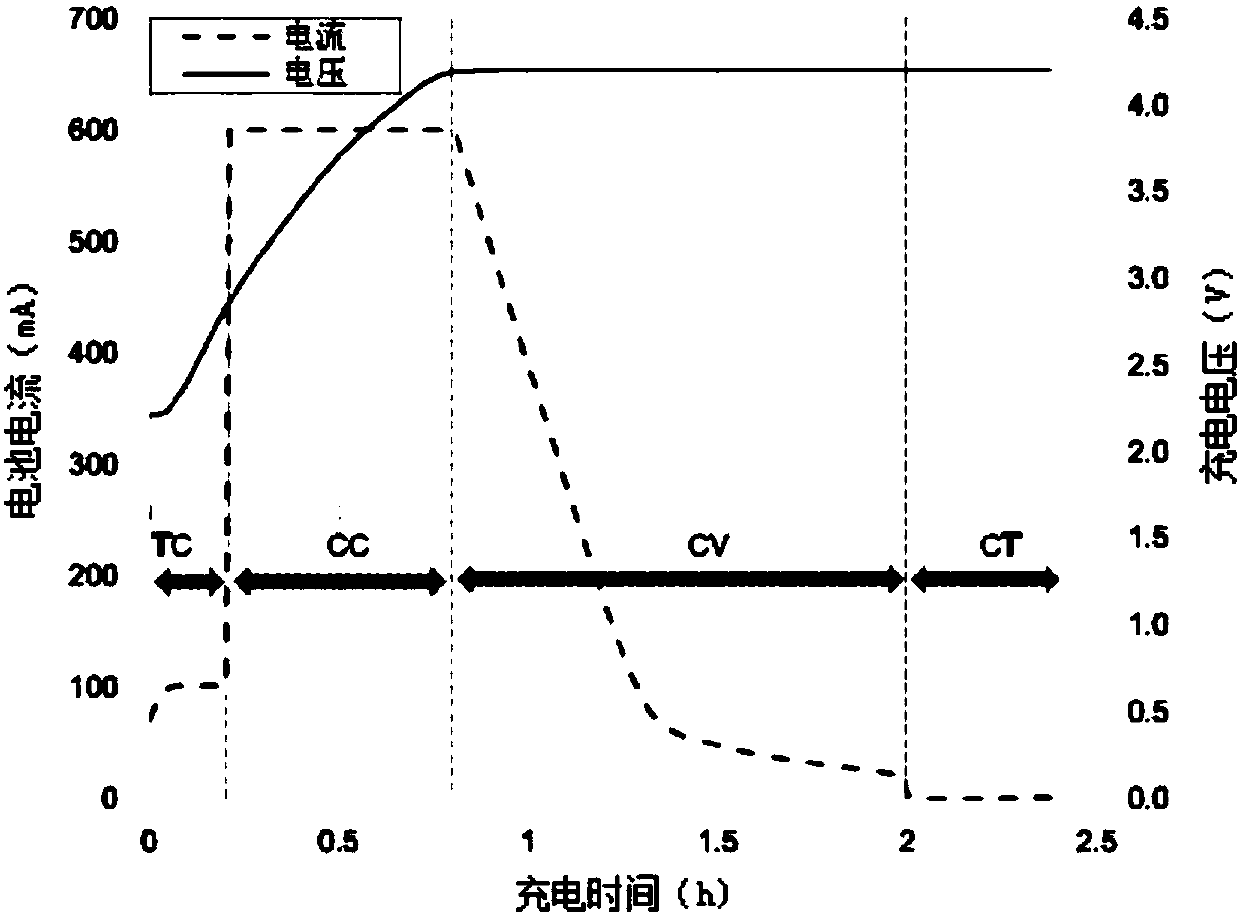Adaptive mobile optical charging system based on feedback signaling
A charging system and self-adaptive technology, applied in current collectors, electric vehicles, electrical components, etc., can solve problems such as limited battery resources, and achieve the effect of ensuring charging safety, optimizing charging performance, and increasing flexibility
- Summary
- Abstract
- Description
- Claims
- Application Information
AI Technical Summary
Problems solved by technology
Method used
Image
Examples
Embodiment 1
[0037] Such as figure 1 As shown, an adaptive mobile optical charging system based on feedback signaling includes a separate transmitting end and a receiving end. The transmitting end includes a feedback controller 1, a power supply 2 and an optical charging transmitter 3 connected in sequence, and the receiving end includes a sequentially connected Connected optical charging receiver, power converter 4 and feedback monitor 5, power converter 4 is connected to the battery 6 that needs to be charged, and battery 6 is a lithium ion battery in this embodiment; Optical charging transmitter 3 sends to the optical charging receiver The light beam transmits power energy, and the feedback monitor 5 is used to feed back the required information to the feedback controller 1 .
[0038] Such as figure 1 As shown, the optical charging transmitter 3 and the optical charging receiver form a mobile optical charging device, which transmits energy through a laser resonator located in free spac...
Embodiment 2
[0058] Assume that battery 6 is charged at the end of the CC phase, as image 3 shown in . The required current and voltage are 600mA and 4.2V, respectively. Therefore, the expected electric energy output power, that is, the output power of the photovoltaic cell panel should be 600mA×4.2V=2.52W. in search Figure 7 After that, the required laser irradiation intensity can be calculated, which is about 4W / cm 2 ,Depend on Figure 6 It can be obtained that the corresponding output current and voltage of the photovoltaic cell panel are 17mA and 148V, respectively. Set the expected laser power density 4W / cm by feedback 2 provided to Power Supply 2, which can then be based on Figure 4 Generate the desired laser power.
Embodiment 3
[0060] In most conventional wireless charging systems, including mobile optical charging systems without adaptive adjustment, the battery 6 can only be charged at a fixed power. based on image 3 According to the lithium-ion battery charging curve in the above, the lithium-ion battery needs a minimum power of 4.2W (constant voltage 4.2V and constant current 1A). Figure 8 The solid line in shows a constant 4.2W charging power. The charging power of the battery 6 in this system is determined by Figure 8 The dashed line in the dash gives, relying on image 3 The shown battery 6 charging curve traces, the gap between the constant power charging and the system is represented by a dashed line combined with bars and dots, which is the power saved by the system.
[0061] The integration of power over time produces electricity. After calculation, the constant power charging consumes 15.12Wh, and this system needs 5.98Wh, a difference of 9.14Wh, which means that this system can sa...
PUM
 Login to View More
Login to View More Abstract
Description
Claims
Application Information
 Login to View More
Login to View More - R&D
- Intellectual Property
- Life Sciences
- Materials
- Tech Scout
- Unparalleled Data Quality
- Higher Quality Content
- 60% Fewer Hallucinations
Browse by: Latest US Patents, China's latest patents, Technical Efficacy Thesaurus, Application Domain, Technology Topic, Popular Technical Reports.
© 2025 PatSnap. All rights reserved.Legal|Privacy policy|Modern Slavery Act Transparency Statement|Sitemap|About US| Contact US: help@patsnap.com



